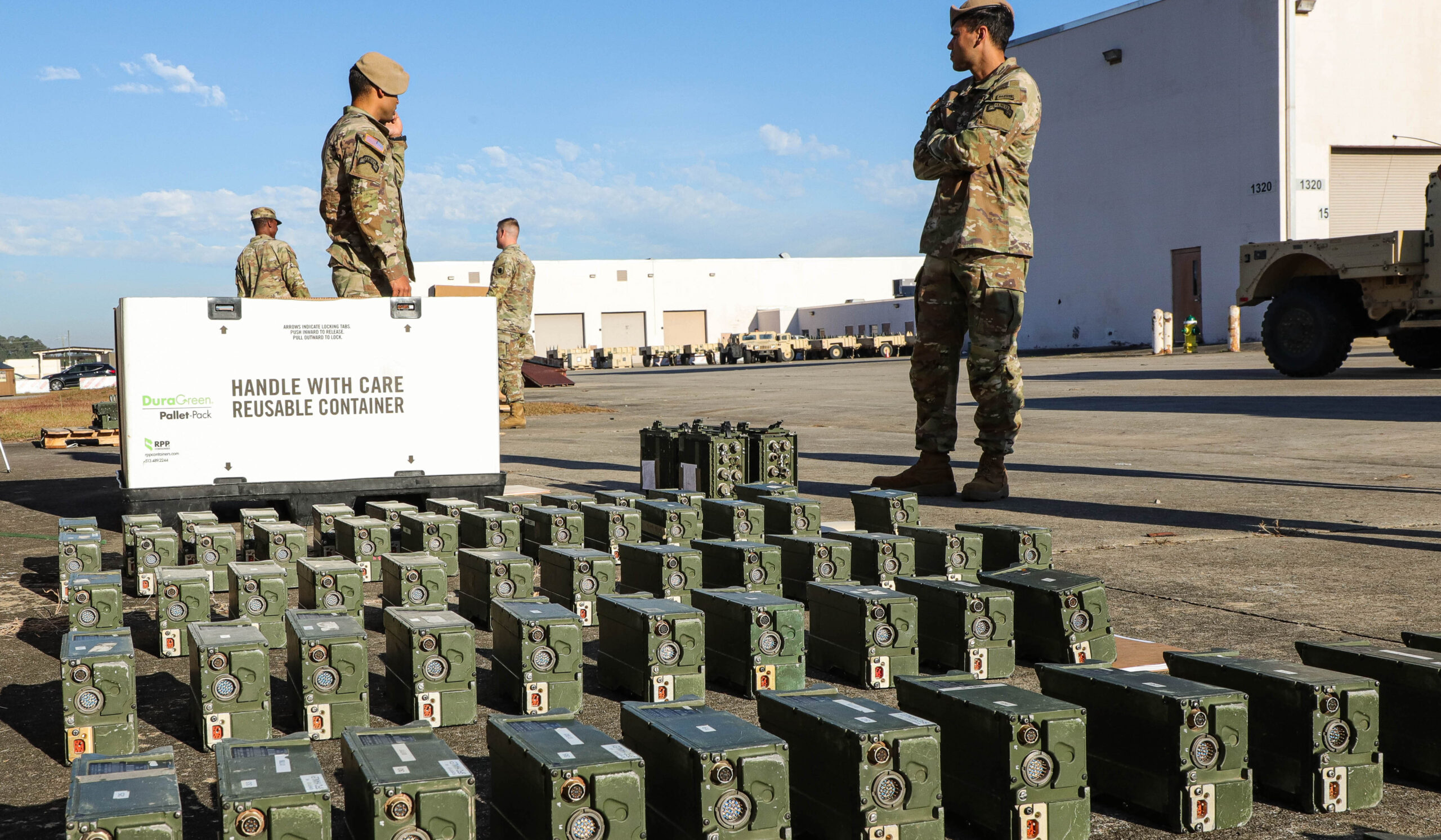

As part of a new pilot program, Army Materiel Command recently told company commanders at two major bases to have their soldiers turn in excess equipment they’d amassed from decades of deployments.
Troops turned in 37,000 pieces of gear.
Soldiers at Fort Stewart, Georgia, and Fort Liberty, North Carolina from heavily deployed units like the 82nd Airborne Division, the 75th Ranger Regiment, and the 3rd Infantry Division turned in everything from tactical vehicles and power generators on trailers to weapons, radios, and other communication systems — all equipment that soldiers are held accountable for even if they don’t get used regularly.
“Over the last 20 years, all of the units, just because of deployments that have happened, have come back with some excess due to wars in Iraq and Afghanistan,” Brig. Gen. John Hinson, Commander of the 3rd Expeditionary Sustainment Command told Task & Purpose.
While reducing the pieces of equipment that company commanders are responsible for, the Army said it expects to save over 309,000 man-hours per year across 15 units or major commands.
One infantry company at Fort Liberty turned in so many items that its property book — which tracks the equipment a unit is responsible for — dropped from 55 pages to 39.
“All that equipment that got turned in, that company commander now does not have to inventory every month,” Hinson said. “It frees up a lot of time for that accountability piece and it frees up a lot of time for the maintainers, the mechanics to actually work on equipment that the company actually uses day in and day out or would use to go to war.”
The initiative, Rapid Removal of Excess Equipment or R2E, is an Army modernization effort aiming to streamline the excess equipment turn-in process and remove unnecessary hardware taking up a unit’s space and time.
Along with reducing the equipment soldiers have to keep track of, the program simplified how soldiers can turn in gear to supply officials.
Subscribe to Task & Purpose today. Get the latest military news and culture in your inbox daily.
Typical Army processes for equipment disposition require every piece to be “fully mission capable” – meaning functional and without faults. Instead, under this pilot program, equipment is sent to service depots for maintenance.
The fate of the excess equipment varied. Some pieces were laterally transferred to other units in need, sent to depots to be repaired, repurposed for reserve and National Guard units, or supplied for foreign military sales.
The program also included units turning in weapons that they were responsible for but did not need, including M249s, MK19s, M240B, M17, M2s, and M4s. Weapons, said Army officials, were distributed to other units that needed them.
“It wasn’t just turning in equipment to get it off old units, but it was also getting that equipment in the right units to improve supply readiness for the units that required it,” said Col. David Alvarez, support operations officer in charge.
The program will mostly affect mechanics and supply clerks who would have smaller workloads, Hinson said. With more work for depot mechanics, the Department of Defense is likely to eventually request more funding for depots, he added.
“When I was in Iraq and Afghanistan and we did [logistics status] reports – they were just very manpower intensive,” Hinson said. The R2E process, he said, “was not manpower intensive. It took out the soldier sitting behind a computer with an Excel document. It was all done in a very automated analytical process.”
Under normal equipment turn-in procedures, soldiers might spend two hours “turning in” a wheeled vehicle, as they complete paperwork, take a final inspection, and check the inventory of items that belong with it. Under the R2E pilot, soldiers were able to “streamline that down to about 15 minutes,” Alvarez said.
The Army pilot took place between October and December 2023. In February, units at Fort Campbell, Kentucky will implement the system, with Joint Base Lewis-McChord to follow.
Administered by Army Materiel Command, the program is meant to meet a primary directive from Army Chief of Staff Gen. Randy George to streamline service processes and increase “equipment on hand readiness.”
Another recent program in the same vein aimed to stop soldiers from doing “unnecessary maintenance” both on vehicles and on the Army’s 800,000 rifles. Launched in May, the program replaces time-based maintenance schedules, like regular six-month oil changes, with maintenance based on usage.
The Army collaborated with data broker and defense contractor Palantir on software for the R2E program to track inventories.
The latest on Task & Purpose
- Navy fires captain of guided missile submarine after DUI arrest
- How many soldiers are in a platoon? The U.S. Army by the numbers
- The Navy relieved 16 commanding officers in 2023
- Bradley Fighting Vehicles are taking out modern tanks in Ukraine
- Army CID investigating daycare incident at Carlisle Barracks